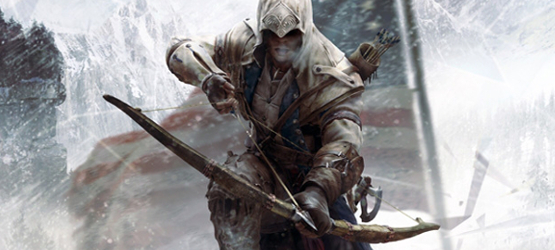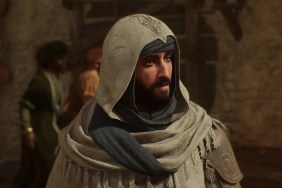When Assassin’s Creed launched early into this once fresh and new generation of consoles, it wasn’t perfect, but you could tell even then that Ubisoft was onto something. The vast, towering cities, easily scalable by a blade-bearing anti-hero were nothing if not ambitious.
Playing as a murderous assassin, cloaked and mysterious, was instantly appealing. But Altaïr was difficult to relate to. Ezio was a step into the right direction in that sense, so much so that he earned a lead role in three separate games. And even though the Italian Renaissance was rich with history known well enough so that it clicked, it didn’t quite hit home.
This is why Ubisoft has had a stroke of pure genius with Connor, who fights for the very freedoms this country was built on, and the setting of the early American colonies during the Revolutionary War being part of a history we all know so well— it’s both relatable, and something we can pour our hearts into.
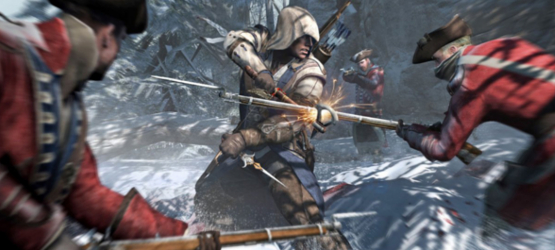
As well-rounded as Assassin’s Creed III is, it’s this setting and the homegrown heroes of America’s roots that make it truly special. And even more so, just how well Ubisoft has brought the past back to life.
Cities that symbolize everything about the States— like Boston and New York—have been faithfully recreated with detail and care. It’s not just the way the market’s architecture resembles Quincy Market or the New England weather, it’s the way the game invites you to be a part of some of the most significant events in American history. Events like the Midnight Ride of Paul Revere, the Boston Tea Party, and the shot heard ’round the world.
Hailing from Boston myself, having lived in Revere, sipped Samuel Adams lager, visited the Hancock building, living only streets away from where Israel Putnam was born, and having always been fascinated by this period of time, putting the outcome of these events in my hands resonates with me in ways I haven’t yet experienced in a video game until now. Assassin’s Creed III remains both accurate in its re-telling, but with enough fantasy added to keep things interesting, intriguing, and unique. At no point does the story feel ripped from history books, despite staying so true to a reality that once was.
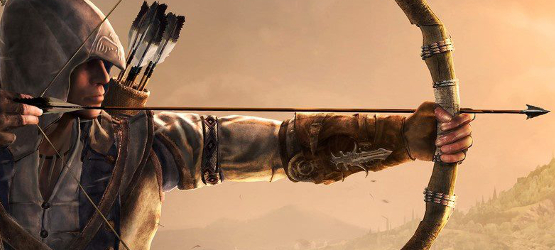
Connor, half-Native American, half-British in his descent, is the perfect character vehicle to drive the entire narrative, representing every angle of cultural turmoil to be found during this era. The duality of his existence shines a light of both sides to every story— for the British occupation, for the colonists, for the Iroquois tribesmen, for the Assassins, and for the Templars.
His Native American heritage also provides a fresh set of weaponry and skills for the series. Yes, the hidden blade may be the staple here; Ezio didn’t have rope darts, snares, or a tomahawk. Nor was he a skilled hunter, able to feel out the land and traverse the treetops with ease. And while these are new to the series, it all bares an air of familiarity.
Swiftly climbing trees and hopping branch from branch using free run is as simple as climbing the side of a building, though occasionally, free run can be a thorn during chase scenes or when fleeing from pursuers. Although rare, nothing is more frustrating than running for your life around a corner, only to faux-jump up the side of a wall, allowing for your capture.
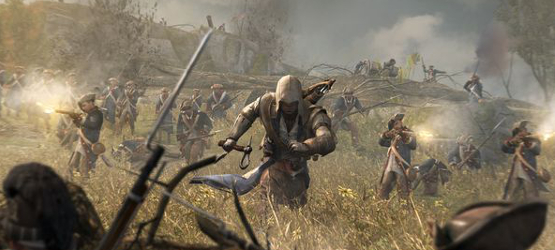
But in a world, and a game so massive and replete, there is little to complain about. And most all of it—the combat, the exploration, the trade, the main story, and even the side-missions—is so enjoyable, it’s easy to forgive the few minor issues you may or may not discover. More glaring, are the random Desmond missions. I do understand why Desmond’s story exists: to explain backstory and tie multiple games in the series together. But when you’re so enveloped in the world and your mission, suddenly warping to a Sci-fi future is jarring and unwelcome.
Much better distractions can be found among the hours and hours’ worth of Homestead, Liberation, or miscellaneous missions. Whether you are locating Ben Franklin’s almanac pages or saving a family from eviction due to British taxation, they all have purpose. And there is so much of this type of content, you can play over 20 hours of the main story, yet have only scratched the surface of what ACIII offers in extras—at least double that of the main playtime, if not triple. It’s that large in scope and scale.
Still, it’s the captivating narrative driving the main campaign that deserves the most attention and will serve you best. It’s a fine example of dynamic character relationships, both between characters, and with the player in control. Even with so much to do otherwise, the main story is so compelling; it’s difficult to pull yourself away from to experience all the small tasks strewn about.
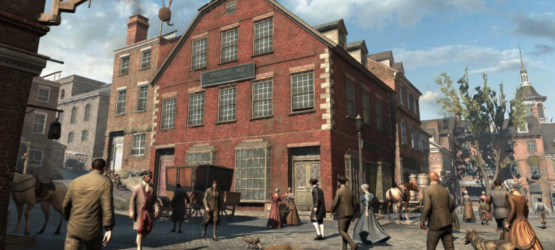
With very little down time, each sequence goes from high point to high point, offering plenty of variety between each. Some may require a careful approach, others may be best approached with a firm hand and hidden blade, while others yet can put you at the helm of a mighty vessel, staying the course against powerful waves, winds, and the onslaught of cannon fire from enemy ships.
In the some sixteen to twenty hours you will spend watching the story unfold, you will never be bored, rarely be frustrated, and eagerly anticipate the next scenario. When it does come to an end, although it’s satisfying, it’s sad to see this journey come to an end. But that’s when you realize the wealth of content that still awaits you scattered all over the map and within the online multiplayer modes.
Single-player excels more than enough to let Assassin’s Creed III stand on that merit alone. With a campaign so strong, and so many hours of content to be found, Assassin’s Creed III doesn’t need multiplayer. But that doesn’t mean that what is offered isn’t of the game’s benefit.
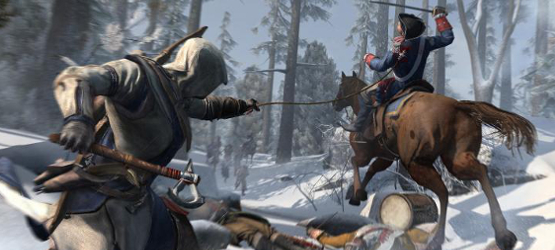
A fresh step away from the monotonous shooters found in online gaming, Assassin’s Creed III’s multiplayer focuses more on stealth, hiding, sneaking, and killing without causing a stir. There are many modes, ranging from the typical free-for-all or deathmatch, to others proposing a cat and mouse or hide-n-seek method. The cooperative mode Wolfpack asks players to team up to complete objectives to reap more meaningful rewards. Multiplayer may not be what will make ACIII memorable; however it is quite good too and shouldn’t be ignored.
Admittedly, after a few spin-offs of Ezio’s adventure, Assassin’s Creed as a franchise grew stale to me. The prospect of the new more familiar locale, a new Assassin, and a new engine promised the evolution I was seeking. Ubisoft has delivered in spades. Assassin’s Creed III takes everything that worked well in previous titles, sprinkled in a touch of Red Dead Redemption, tweaked the combat to be as smooth as Batman: Arkham City, borrowed the cinematic and character development of Uncharted 2, and polished it all off to be one of, if not the very best, game of 2012. It will be remembered fondly as one of the crowning achievements of this console generation, and offers a window to what next-generation titles may be capable of in scale, story, and wealth of content.
-
The setting is filled with history and heroes
-
Combat is better than ever, feeling almost scripted
-
Animations are flawless and varied
-
Connor serves as the perfect main character
-
Hunting and trade at the Homestead
-
So many side-missions, over 20 hours, maybe double that
-
Story is compelling. Has you eagerly awaiting each next sequence
-
Game is stunning to look at, New England is perfectly recreated
-
Nautical missions are a blast
-
I could go on forever with positive points
-
Desmond missions are distracting
-
Free run can be a pain in the ass during chase scenes
